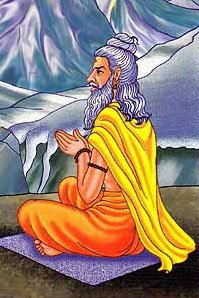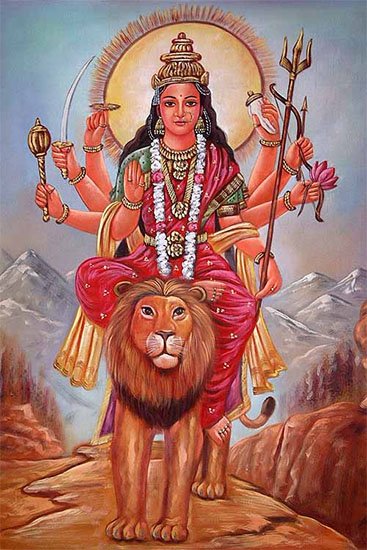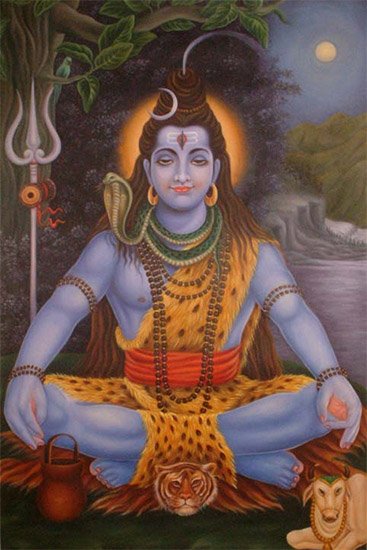Trinayana, Tri-nayana, Trinayanā: 16 definitions
Introduction:
Trinayana means something in Hinduism, Sanskrit, Marathi. If you want to know the exact meaning, history, etymology or English translation of this term then check out the descriptions on this page. Add your comment or reference to a book if you want to contribute to this summary article.
In Hinduism
Purana and Itihasa (epic history)
Source: JatLand: List of Mahabharata people and placesTrinayana (त्रिनयन) is a name mentioned in the Mahābhārata (cf. XIV.8.26, XIV.8) and represents one of the many proper names used for people and places. Note: The Mahābhārata (mentioning Trinayana) is a Sanskrit epic poem consisting of 100,000 ślokas (metrical verses) and is over 2000 years old.

The Purana (पुराण, purāṇas) refers to Sanskrit literature preserving ancient India’s vast cultural history, including historical legends, religious ceremonies, various arts and sciences. The eighteen mahapuranas total over 400,000 shlokas (metrical couplets) and date to at least several centuries BCE.
Shaktism (Shakta philosophy)
Source: Google Books: ManthanabhairavatantramTrinayanā (त्रिनयना) refers to “she who has three eyes”, according to the Śrīmatottara-tantra, an expansion of the Kubjikāmatatantra: the earliest popular and most authoritative Tantra of the Kubjikā cult.—Accordingly, while describing Trikhaṇḍā: “[...] She has three sections, three faces, a divine form and large belly. She has three eyes on each face [i.e., trinayanā—tritrikair nayanair yuktā] and is blissful with wine. (The face) in front is white like snow, a jasmine flower or the moon. Content and tranquil, its gaze is immersed in subtle contemplation and, radiant with divine jewels, is adorned with jewel earrings. [...]”.
Source: Brill: Śaivism and the Tantric Traditions (shaktism)Trinayanā (त्रिनयना) refers to “she who is three-eyed” and is used to describe Goddess Kāmeśvarī, according to the King Vatsarāja’s Pūjāstuti called the Kāmasiddhistuti (also Vāmakeśvarīstuti), guiding one through the worship of the Goddess Nityā.—Accordingly, “[...] May the goddess Kāmeśvarī, who dwells at the front angle [of the central triangle], give me all objects of my desire. She is three-eyed (trinayanā), her eyes are beautiful and her limbs are ruddy. She has the crescent moon on her crest. She looks beautiful with her four hands marked with a snare together with a goad, a plate with the nectar of immortality, the gesture of boon-giving, and the gesture of safety. [...]”.

Shakta (शाक्त, śākta) or Shaktism (śāktism) represents a tradition of Hinduism where the Goddess (Devi) is revered and worshipped. Shakta literature includes a range of scriptures, including various Agamas and Tantras, although its roots may be traced back to the Vedas.
Shaivism (Shaiva philosophy)
Source: Brill: Śaivism and the Tantric TraditionsTrinayana (त्रिनयन) refers to the “three-eyed one” and is used to describe Śiva, according to the Halāyudhastotra verse 34-35.—Accordingly, “The visitation of the wives of the distinguished sages in the Pine Park, the oblation with seed in Fire, the twilight dance: Your behaviour is not reprehensible. O Three-eyed one (trinayana)! The doctrines of the world do not touch those who have left worldly life, having passed far beyond the path of those whose minds are afflicted by false knowledge. The gods all wear gold and jewels as an ornament on their body. You do not even wear gold the size of a berry on your ear or on your hand. The one whose natural beauty, surpassing the path [of the world], flashes on his own body, has no regard for the extraneous ornaments of ordinary men”.

Shaiva (शैव, śaiva) or Shaivism (śaivism) represents a tradition of Hinduism worshiping Shiva as the supreme being. Closely related to Shaktism, Shaiva literature includes a range of scriptures, including Tantras, while the root of this tradition may be traced back to the ancient Vedas.
Languages of India and abroad
Marathi-English dictionary
Source: DDSA: The Molesworth Marathi and English Dictionarytrinayana (त्रिनयन).—a (S) trilōcana a (S) Trinoculous, having three eyes--Shiva &c.
Source: DDSA: The Aryabhusan school dictionary, Marathi-Englishtrinayana (त्रिनयन).—m Having three eyes. An epithet of Shiva.
Marathi is an Indo-European language having over 70 million native speakers people in (predominantly) Maharashtra India. Marathi, like many other Indo-Aryan languages, evolved from early forms of Prakrit, which itself is a subset of Sanskrit, one of the most ancient languages of the world.
Sanskrit dictionary
Source: DDSA: The practical Sanskrit-English dictionaryTrinayana (त्रिनयन).—epithets of Śiva; R.3. 66; Kumārasambhava 3.66;5.72.
Trinayana is a Sanskrit compound consisting of the terms tri and nayana (नयन). See also (synonyms): trinetra, trilocana.
--- OR ---
Trinayanā (त्रिनयना).—Pārvatī.
Trinayanā is a Sanskrit compound consisting of the terms tri and nayanā (नयना).
Source: Cologne Digital Sanskrit Dictionaries: Edgerton Buddhist Hybrid Sanskrit DictionaryTrinayana (त्रिनयन).—m., name of a region (janapada; in the south): Gaṇḍavyūha 126.26.
Source: Cologne Digital Sanskrit Dictionaries: Shabda-Sagara Sanskrit-English DictionaryTrinayana (त्रिनयन).—mfn.
(-naḥ-nī-naṃ) Three-eyed, tri-ocular. m.
(-naḥ) A name of Siva. E. tri three, and nayana an eye; this deity is represented with a third eye in his forehead; also similar compounds, as tridṛś, trinetra, tryakṣa, &c.
Source: Cologne Digital Sanskrit Dictionaries: Benfey Sanskrit-English DictionaryTrinayana (त्रिनयन).—triṇayana triṇayana and trinayana, adj. having three eyes, epithet of Śiva, [Meghadūta, (ed. Gildemeister.)] 53; Mahābhārata 14, 207.
Trinayana is a Sanskrit compound consisting of the terms tri and nayana (नयन).
Source: Cologne Digital Sanskrit Dictionaries: Cappeller Sanskrit-English DictionaryTrinayana (त्रिनयन).—[adjective] three-eyed, [masculine] [Epithet] of Rudra-Śiva.
Source: Cologne Digital Sanskrit Dictionaries: Monier-Williams Sanskrit-English Dictionary1) Trinayana (त्रिनयन):—[=tri-nayana] [from tri] m. = -dṛś, [Mahābhārata xiv; Rāmāyaṇa; Pāṇinīya-śikṣā; Meghadūta] etc.
2) [v.s. ...] n. Name of a town, [Kṛṣṇakrīḍ.]
3) Trinayanā (त्रिनयना):—[=tri-nayanā] [from tri-nayana > tri] f. Durgā, [DevīP.]
Source: Cologne Digital Sanskrit Dictionaries: Yates Sanskrit-English DictionaryTrinayana (त्रिनयन):—[tri-nayana] (naḥ) 1. m. A name of Shiva.
[Sanskrit to German]
Sanskrit, also spelled संस्कृतम् (saṃskṛtam), is an ancient language of India commonly seen as the grandmother of the Indo-European language family (even English!). Closely allied with Prakrit and Pali, Sanskrit is more exhaustive in both grammar and terms and has the most extensive collection of literature in the world, greatly surpassing its sister-languages Greek and Latin.
Kannada-English dictionary
Source: Alar: Kannada-English corpusTriṇayana (ತ್ರಿಣಯನ):—[noun] = ತ್ರಿನೇತ್ರ - [trinetra -] 2.
--- OR ---
Trinayana (ತ್ರಿನಯನ):—[noun] = ತ್ರಿನೇತ್ರ - [trinetra -] 2.
Kannada is a Dravidian language (as opposed to the Indo-European language family) mainly spoken in the southwestern region of India.
See also (Relevant definitions)
Query error!
Full-text: Yavishtha, Trinetra, Varshishtha, Akrush, Trilocana, Aye, Tripura.
Relevant text
Search found 21 books and stories containing Trinayana, Tri-nayana, Tri-nayanā, Trinayanā, Triṇayana; (plurals include: Trinayanas, nayanas, nayanās, Trinayanās, Triṇayanas). You can also click to the full overview containing English textual excerpts. Below are direct links for the most relevant articles:
Isanasivagurudeva Paddhati (study) (by J. P. Prajith)
5. The treatment of Shakti concept in Isanasivagurudeva-paddhati < [Chapter 3 - Depiction of Gods and Goddesses]
3. The Supremacy of Lord Siva in Isanasivagurudeva-paddhati < [Chapter 3 - Depiction of Gods and Goddesses]
7. Ganapati in Isanasivagurudeva-paddhati < [Chapter 3 - Depiction of Gods and Goddesses]
Garga Samhita (English) (by Danavir Goswami)
Verse 2.3.31 < [Chapter 3 - Description of the Yamunā’s Arrival]
Notices of Sanskrit Manuscripts (by Rajendralala Mitra)
Soundarya Lahari of Shri Shankara (Study) (by Seetha N.)
The Home method of Tantric worship < [Chapter 6 - Saundaryalahari—External modes of Worship practised]
Introduction (the philosophy behind Shiva and Shakti) < [Chapter 7 - Philosophical aspects in Saundaryalahari]
List of Mahabharata people and places (by Laxman Burdak)
The history of Andhra country (1000 AD - 1500 AD) (by Yashoda Devi)
Part 21 - Saubhagyadeva (A.D. 1400-1420) < [Chapter XIII - The Dynasties in South Kalinga]
Part 12 - The Pallavas of Virakuta A.D. (1100-1420) < [Chapter XIII - The Dynasties in South Kalinga]
Introduction (Kota Dynasty) < [Chapter V - The Kotas (A.D. 1100-1270)]